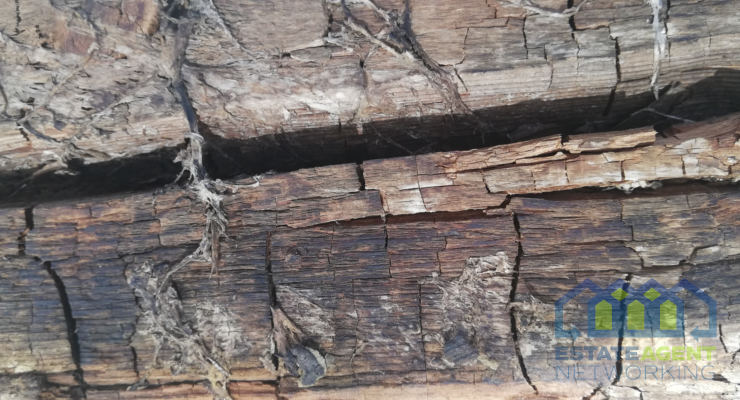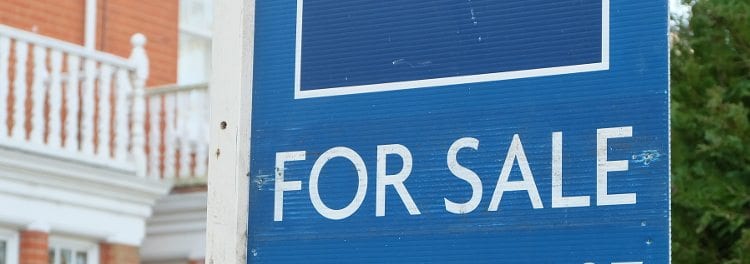The Ultimate Guide to Damp-Proof Course Treatments for a Dry Home
Damp issues in homes are more common than you might think, often manifesting in diverse ways such as rising damp, penetrating damp, and condensation. Dampness not only impacts the structural integrity of a building but also jeopardizes the health of its inhabitants due to mould and other allergenic growths. In this ultimate guide to damp-proof courses for a dry home, we will delve into the causes of damp, explore different types of damp-proof courses, identify signs of damp, and discuss both preventative and remedial measures to ensure your home remains dry and comfortable.
What are the Causes of Damp in Homes?
How does rising damp occur?
Rising damp typically occurs when moisture from the ground level seeps up through porous materials like bricks and mortar. This type of damp is more prevalent in older properties where an original or existing damp proof course has failed or is non-existent. The capillary action of the walls and floors draws up water, which carries salts and other minerals, leaving damp patches and often damaging internal walls. Understanding rising damp and how it migrates is crucial for effective damp proofing your home.
What are the common causes of damp walls?
Damp walls can result from various sources. Penetrating damp is a common cause that occurs when water from external sources, such as rain, penetrates through the building envelope. Poor maintenance, such as blocked gutters or cracked walls, can exacerbate this issue. Another cause is excess moisture from internal sources like leaking pipes or high humidity levels. All these factors contribute to the broader category of damp problems that can affect your property.
How does condensation contribute to damp issues?
Condensation is another major contributor to damp issues within your home. This phenomenon occurs when warm, moist air comes into contact with cooler surfaces such as windows, walls, and floors. The resulting water droplets can accumulate and create damp patches on walls, leading to mould growth and further damage if not addressed. Proper ventilation and managing indoor humidity levels are essential strategies to prevent moisture build-up due to condensation.
What Types of Damp-Proof Courses Are Available?
What is a chemical damp-proof course?
A chemical damp-proof course is one of the most effective damp proofing methods. It involves injecting a chemical damp-proof solution into the walls to create a barrier that prevents moisture from rising. This type of damp proof course is commonly used in situations where a physical damp-proof course is either impractical or impossible to install. The chemical damp solution penetrates the wall, solidifying to form a water-repellent layer.
What are the benefits of using a damp-proof membrane?
A damp-proof membrane is another popular choice for damp-proofing your home. This membrane is typically installed in walls and floors to create a physical barrier against water ingress. The benefits of using a damp-proof membrane are considerable as it offers a long-lasting solution that can handle varying types of damp problems. It is particularly useful in new constructions but can also be retrofitted to address existing damp issues.
How does a damp-proof paint work?
Damp-proof paint is a versatile and cost-effective solution for treating damp patches on internal walls. This specialized paint contains water-repellent properties, helping to create a moisture-resistant barrier. It is often used in conjunction with other damp-proofing methods for enhanced protection. By applying damp-proof paint, homeowners can add an extra layer of defense against both existing damp and future damp problems.
How to Identify Signs of Damp?
What are the indications of a damp wall?
Recognizing a damp wall is the first step towards effective remediation. Common indications include discolored or peeling paint, damp patches, and a musty odor within the room. In more severe cases, structural damage such as crumbling plaster or brickwork may occur. Regularly inspecting your walls for these signs of damp can help you address issues before they become significant problems.
How to spot mould effectively?
Mould is a common consequence of damp conditions and can be easily identified by its distinctive black, green, or white spots on walls, ceilings, and other surfaces. Mould thrives in areas with high humidity and little ventilation. Spotting mould early on is crucial for maintaining a healthy living environment. Not only does it damage surfaces, but it can also have serious health implications, particularly for those with respiratory conditions.
What do damp patches on walls indicate?
Damp patches on walls are often indicative of a water ingress issue. These patches are usually darker than the surrounding wall and may feel cold or damp to the touch. The presence of damp patches can signal problems such as rising damp, penetrating damp, or condensation. Identifying the underlying cause is essential for implementing the correct damp-proofing solution.
How to Prevent Damp Problems?
How can you protect your home from damp?
Preventing damp problems begins with proactive measures to protect your home. Ensuring proper drainage around your property, maintaining gutters and downpipes, and sealing any cracks in walls are fundamental steps. Additionally, keeping indoor humidity levels in check through adequate ventilation can significantly mitigate the risk of condensation-related damp issues. Regular property maintenance and inspections help catch potential damp problems early.
What professional treatments are available to prevent damp?
When it comes to damp-proofing your home, several professional treatments are available. These include the installation of a chemical damp-proof course, application of a damp-proof membrane, and the use of damp-proof paint. Professionals can also conduct comprehensive assessments to identify potential issues and recommend tailored solutions. Investing in professional damp-proofing methods ensures long-term protection against various types of damp.
What are DIY methods to prevent moisture?
In addition to professional treatments, there are several DIY methods homeowners can employ to prevent moisture from becoming a significant problem. Using dehumidifiers, installing extractor fans in high-humidity areas, and regularly cleaning and maintaining gutters are effective strategies. Applying waterproof sealants to vulnerable external surfaces and using moisture-resistant materials indoors are also practical DIY solutions.
How to Fix Damage Already Caused by Damp?
How to treat mould caused by damp?
Treating mould caused by damp involves a combination of cleaning and preventive measures. Start by scrubbing the affected areas with a mixture of water and detergent, followed by applying a mould-killing solution. Ensuring adequate ventilation and reducing humidity levels are critical steps to prevent mould recurrence. For extensive mould infestations, it may be necessary to consult a damp specialist.
What are the steps to repair damp patches on walls?
Repairing damp patches on walls requires a thorough approach. First, identify and resolve the source of dampness to prevent further damage. Then, remove damaged plaster or paint and allow the wall to dry completely. Once dry, apply a damp-proof paint or membrane before replastering and repainting the wall. This process ensures that the affected area is properly treated and protected against future damp problems.
When to call a damp specialist?
While minor damp issues can often be addressed with DIY methods, more severe or persistent problems require the expertise of a damp specialist. If you notice recurring damp patches on walls, significant mould growth, or structural damage, it’s time to seek professional help. A damp specialist can provide a comprehensive assessment and implement the most effective solutions to safeguard your home.
The Ultimate Guide to Damp-Proof Course Treatments for a Dry Home
Ensuring that your home remains damp-free is an essential step in maintaining its structural integrity and overall health. Damp issues can lead to a variety of problems such as structural damage, health-related issues due to mould, and reduced energy efficiency. This ultimate guide to damp-proof courses will walk you through the effective strategies for damp-proofing your home, covering every aspect from understanding what causes damp, to implementing the right solutions for different damp problems.
What Causes Damp in Homes?
Understanding Different Types of Damp
Dampness in your home can be attributed to several causes, and understanding the different types of damp is crucial for effective treatment. The three main types of damp are rising damp, penetrating damp, and condensation. Rising damp occurs when moisture from the ground level travels up through the walls and floors due to capillary action. Penetrating damp, on the other hand, results from water infiltrating the building from external sources, such as rain seeping through the walls. Lastly, condensation occurs when excess moisture within the air inside your home condenses on cold surfaces.
Identifying the Causes of Damp Walls and Damp Patches
Identifying the root causes of damp patches on walls is important for addressing the problem effectively. Rising damp is often caused by the lack of an effective damp-proof course (DPC) or a compromised one. Poor construction materials can also lead to capillary moisture rise. Penetrating damp typically results from external defects such as damaged guttering, roof leaks, or cracks in the walls. Condensation, meanwhile, is commonly caused by poor ventilation and high humidity levels within your home. Recognizing these causes helps in pinpointing the necessary damp-proofing methods required to protect your home.
Common Signs of Damp and How to Detect Them
Detecting damp problems early can save you from extensive repair work and costs. Common signs of damp include musty odors, damp patches, peeling paint, wallpaper blisters, and black mould growth on walls and ceilings. Rising damp usually presents itself as a tide mark on internal walls, whereas penetrating damp often appears as isolated patches that grow in size during wet weather. Condensation is easily spotted through water droplets or patches on windows and walls. By being vigilant and conducting regular checks, you can catch these issues early and implement the necessary measures to maintain a dry home.
How Does a Damp-Proof Course Work?
Types of Damp-Proof Courses: Chemical, Physical, and Membrane
A damp-proof course is a barrier designed to prevent moisture from rising up through walls and floors. There are three main types of DPCs: chemical, physical, and membrane. Chemical damp-proof courses involve injecting a water-repellent solution into the wall to prevent moisture rise. Physical DPCs are usually made from materials such as slate or plastic that act as a physical barrier to damp. Membranes, such as damp-proof membranes made from polyethylene, are installed within walls and floors to block moisture. Each type has its own advantages and suitable applications depending on the specific damp problem.
The Role of a Damp-Proof Membrane
A damp-proof membrane (DPM) is a vital component in modern damp-proofing methods. Often used in conjunction with a chemical or physical DPC, a DPM is a thick, impervious material installed beneath the flooring or within walls to prevent moisture ingress. Its primary role is to provide an additional line of defense against ground-level moisture that could seep into your home’s structure. These membranes are especially effective in preventing rising damp and are a crucial element in comprehensive damp-proofing solutions.
Professional Installation of Damp-Proof Courses
While there are DIY damp-proofing options, professional installation of a damp-proof course is often recommended for ensuring effective and long-lasting results. Experts are equipped with the knowledge, tools, and experience to correctly identify the type of damp and its causes, and to implement the most suitable DPC. Professional damp-proofing services may include the injection of chemical barriers, the installation of physical barriers, or the application of membranes. Given the serious nature of damp issues, investing in professional installation can save you from future complications and expenses.
What Are the Solutions for Rising Damp?
Using a Damp-Proof Membrane to Combat Rising Damp
Rising damp can be effectively combated by installing a damp-proof membrane. This involves laying a polyethylene sheet within the walls and under the floor to create an impermeable barrier against moisture from the ground. The damp-proof membrane blocks the capillary action that causes rising damp, ensuring that your internal walls and floors remain dry. This solution is typically used in new constructions but can also be retrofitted in existing buildings with rising damp issues.
Choosing a Suitable Chemical Damp-Proof Course
A chemical damp-proof course is another effective method for tackling rising damp. This involves injecting a water-repellent chemical into the mortar lines or bricks of the affected walls. The chemical creates a hydrophobic barrier that prevents water from rising through the wall to prevent moisture ingress. When selecting a chemical DPC, it’s important to consider factors such as the extent of the rising damp and the condition of the wall materials. Professional assessment and installation ensure the right product and method are used for optimal results.
Steps to Prevent Moisture at Ground Level
Preventing moisture at ground level is crucial for stopping rising damp before it begins. Ensure proper site drainage around your home to divert water away from the foundation. Installing a reliable damp-proof course during construction or through retrofitting provides a barrier against moisture. Regularly inspect and maintain the external walls and the base of your house to seal any potential entry points for water. Additionally, maintaining vegetation and landscaping around your home can also prevent unwanted moisture buildup.
How to Address Penetrating Damp?
Effective Damp-Proof Paint Options
One of the most immediate solutions for penetrating damp is the application of damp-proof paint. These specialized paints are waterproof and act as a barrier against moisture penetration. They can be used on internal and external walls, and are particularly effective in preventing water from seeping in through small cracks and porous surfaces. Applying damp-proof paint is a straightforward method to provide an extra layer of protection and enhance the durability of your home’s walls.
Fixing External Factors that Cause Damp
Addressing external factors is essential in solving penetrating damp issues. This involves fixing broken gutters, downspouts, and roofing to prevent rainwater from running down the walls. Repairing cracks and damaged pointing on the exterior of your home creates a solid barrier against water ingress. It’s also important to ensure proper sealing around windows and doors. By addressing these external factors, you minimize the risk of water penetrating your walls and causing damp problems within your home.
Long-term Solutions for Penetrating Damp
Long-term solutions for penetrating damp involve a combination of physical repairs and preventive maintenance. Regular inspections and timely repairs of your home’s exterior, including walls, roofs, and drainage systems, are crucial. Enhancing the waterproofing of your home using advanced damp-proofing materials such as membranes, sealants, and damp-proof paints offers sustained protection. Implementing these measures reduces the likelihood of future damp problems and ensures a healthy, dry living environment.
How to Prevent Damp and Mould in Your Home?
Proper Ventilation and Condensation Control
Proper ventilation is key to preventing condensation and the subsequent growth of mould. Ensure that your home is well-ventilated by using extractor fans in high-humidity areas such as kitchens and bathrooms. Ventilation systems and dehumidifiers can help maintain optimal humidity levels. Additionally, open windows regularly to allow fresh air circulation, which helps dissipate excess moisture in the air and prevents condensation from forming on cold surfaces.
Routine Maintenance to Prevent Damp Issues
Routine maintenance is vital for preventing damp issues. Conduct regular checks of your home’s structure, especially after heavy rainfall, to detect and address any signs of damp early. Inspect roofing, guttering, and drainage systems to ensure they are functioning properly and are free from blockages. Routine maintenance also includes keeping the external walls sealed and painted with damp-proof paints and repairing any cracks or defects promptly. Regular upkeep enhances your home’s defense against damp.
Using Mould-Resistant Paint and Other Preventive Measures
Mould-resistant paint is an effective preventive measure against damp and mould growth. These paints contain antimicrobial agents that inhibit the growth of mould and mildew on painted surfaces. Apply mould-resistant paint on walls, ceilings, and other areas prone to damp. Additionally, use moisture-resistant materials and finishes in damp-prone areas. Combining these measures with good ventilation, regular maintenance, and a reliable damp-proof course ensures comprehensive protection against damp and mould within your home.








